Energy, Springs and Materials
Area under a Force-Extension Graph:
- The amount of work done in stretching a material is equal to the force applied multiplied by the distance moved
- Therefore, the area under a force-extension graph represents the work done to stretch the material
- The work done to stretch the material is also equal to the elastic potential energy stored in the material
The amount of work done to stretch a material can be determined by finding the area under the force-extension graph.
This is true for whether the material obeys Hooke’s law or not:
- In the region where the material obeys Hooke’s law, the work done can be calculated as the area of a right-angled triangle under the graph. The base of the triangle represents the extension and the height represents the force.
- In the region where the material doesn’t obey Hooke’s law, the area under the graph is the total work done to stretch the material. To calculate this area, the graph must be split into separate segments and the individual areas of each segment added up.
Loading and unloading
Below is the force-extension curve of a material that has surpassed its elastic limit but has not yet undergone plastic deformation, for both stretching and contraction.
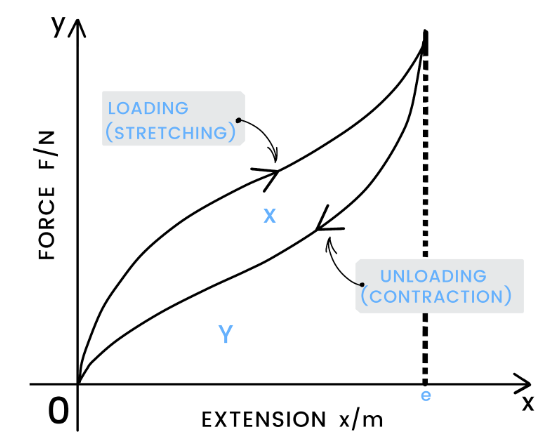
- The curve for contraction is consistently lower than that of stretching.
- Area X on the graph signifies the net work done on the material or the thermal energy that has been dissipated.
- To extend the material to an extension e, the minimum energy required is given by the sum of areas X and Y.
Hooke’s Law
When a spring or piece of metal is stretched, it gets longer. This video explains this relationship and how to produce a force-extension graph to investigate the behavior of materials.
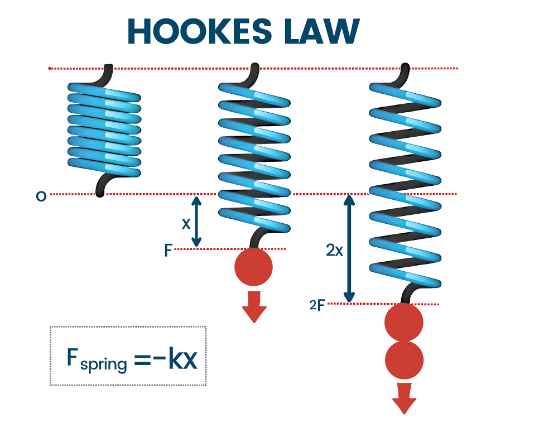
Springs in Parallel and Series
Understanding how one spring extends when a load is applied can help investigate combinations of springs in parallel and series, similar to the behavior of capacitors in a circuit.
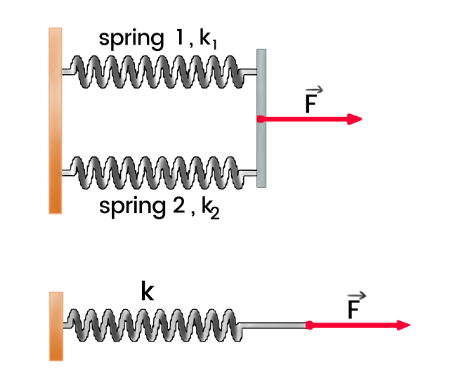
Elastic Potential Energy in Springs
Stretching a spring or rubber band stores energy because work is done in extending it. This video explains how to calculate the amount of energy stored.
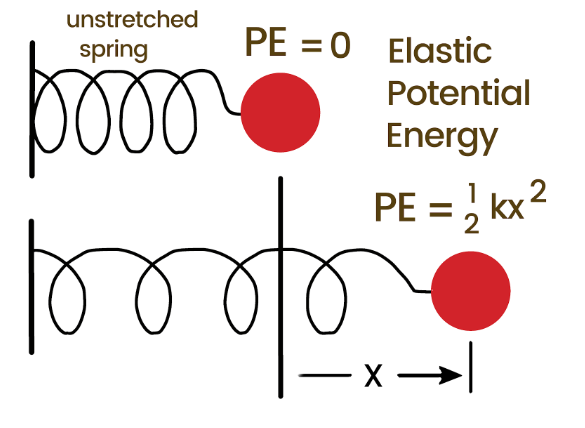
Stress, Strain and Young’s Modulus
Stress and strain are different but allow investigation of materials. Their ratio can also be calculated to give the Young’s or Engineering modulus, which this video explains.
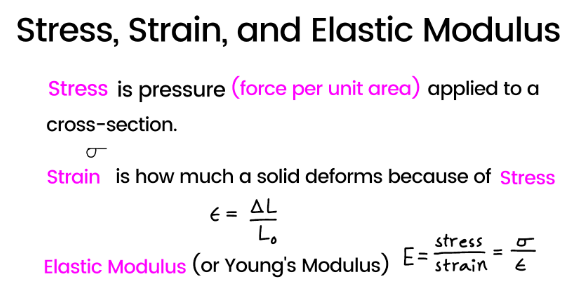
Stress-Strain Graphs
This video explores the four key points you would expect to see on a stress-strain graph for a typical ductile material.
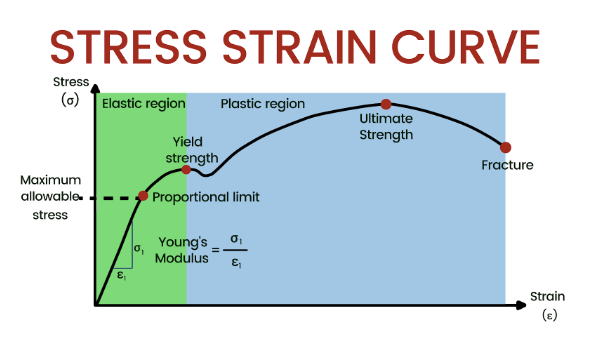
Ductile and Brittle Materials
This video explains the various material properties that can be identified from a stress-strain graph, from brittle substances like glass and a Crunchie to the plastic deformation of copper and a Mars bar.
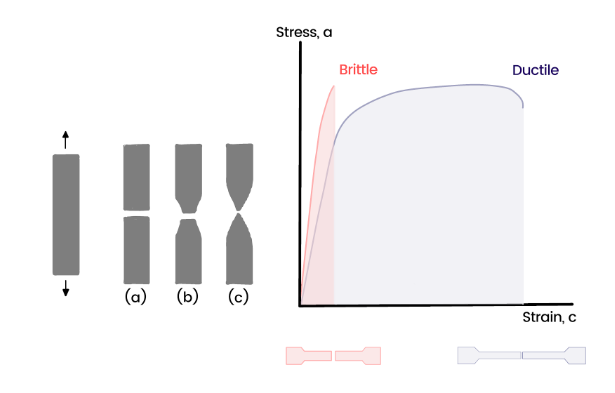
Behavior of Rubber
Stretching a rubber band causes energy to be stored, which causes the rubber to heat up. This video explains how rubber behaves differently from metal when loaded and unloaded.
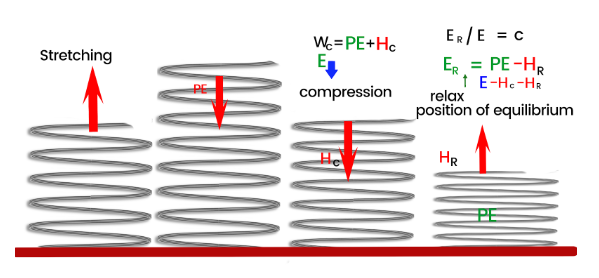
Stokes’ Law
Stokes’ Law describes the motion of falling objects through fluids under specific conditions. This video looks at the equation for Stokes’ Law and how terminal velocity is related to various factors.
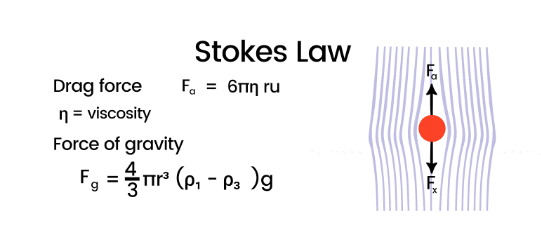
Energy is the ability to do work, and it comes in many forms such as kinetic energy, potential energy, thermal energy, electrical energy, and more. It can be transformed from one form to another, but it cannot be created or destroyed.
There are various ways to store energy, such as batteries, capacitors, flywheels, compressed air, and pumped hydroelectricity. Each method has its advantages and disadvantages, and the choice depends on factors like cost, efficiency, and scalability.
Springs are elastic objects that can store mechanical energy when compressed or stretched. The amount of energy stored is proportional to the displacement from the equilibrium position, and it follows Hooke’s law which states that the force exerted by a spring is proportional to the distance it is stretched or compressed.
Springs can be made from various materials, but some common ones are steel, titanium, nickel alloys, and plastics. Each material has its own properties like stiffness, strength, fatigue resistance, and corrosion resistance, and the choice depends on the application requirements.
Materials science is an interdisciplinary field that explores the structure, properties, processing, and performance of materials. It encompasses various branches such as metallurgy, ceramics, polymers, composites, and biomaterials, and it has applications in industries such as aerospace, automotive, electronics, energy, and healthcare.
Materials play a crucial role in energy efficiency because they can affect factors like insulation, conductivity, friction, and wear. For example, using high-performance insulation materials can reduce heat loss in buildings and increase energy savings, while using low-friction materials can improve the efficiency of mechanical systems like engines and turbines.
Some current research topics include advanced energy storage systems, high-strength and lightweight materials, smart and responsive materials, and sustainable materials and manufacturing. A-Level students interested in these fields can explore the latest scientific publications, attend conferences and workshops, or participate in research projects or internships.





Still got a question? Leave a comment
Leave a comment